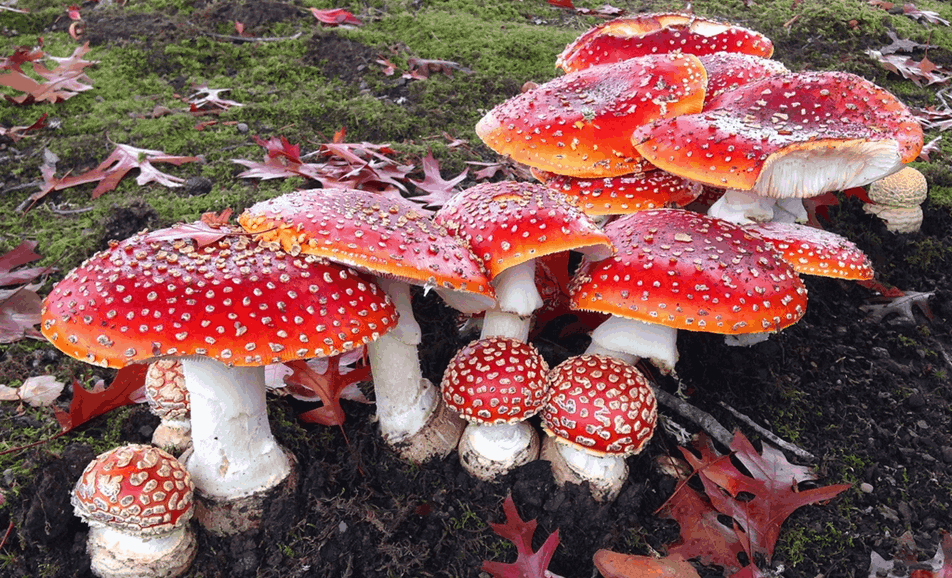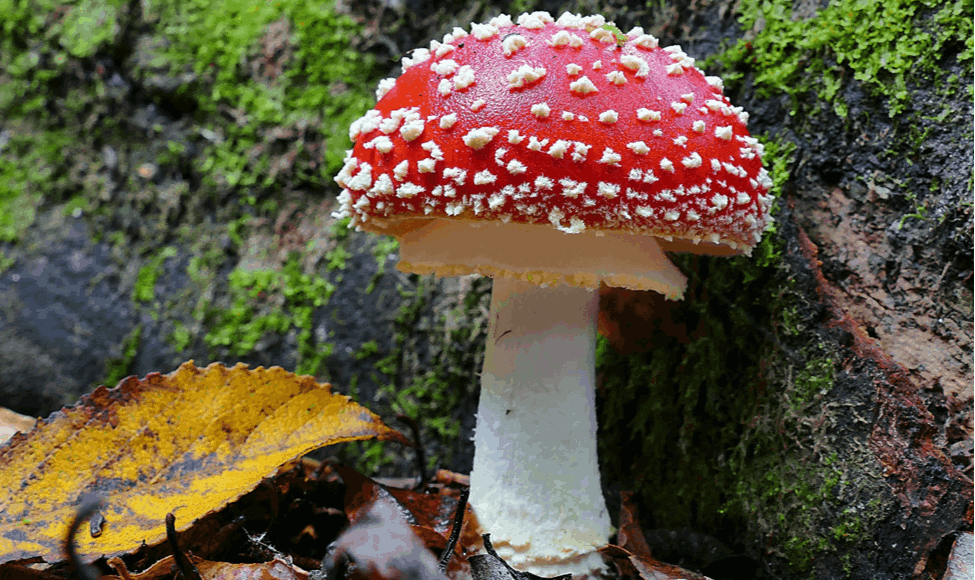Last updated on March 27th, 2024 at 01:49 am
Are you intrigued by the mystery of Amanita Muscaria? It could be the tale of its poisonous qualities that capture your imagination. Or perhaps those striking red-and-white spotted caps adorn your bookshelf, charming in their natural beauty. Whatever it is that brings you to this post—be it whimsy or fascination with nature’s wonder—it’s time for a deep dive into all there is to know about Amanita Muscaria!
Prepare yourself for an exciting journey through history and scientific exploration as we uncover everything from mushroom mythology to psychoactive properties, physiological effects, and culinary uses. You’ll gain insight not only into how humans use these mysterious mushrooms but also into where they grow and what makes them so unique in comparison to other fungi species. So, settle in: let’s begin our quest into the world of Amanita Muscaria learning!
Table of Contents
1. What is Amanita Muscaria?
Amanita Muscaria, also known as Fly Agaric or Fly Amanita, is a medium-sized mushroom that grows in the temperate and boreal regions of the Northern Hemisphere. It is distinguished by its red or orange cap with white spots, and it stands out for its bright color.
While some people are intimidated by these mushrooms, it’s actually fairly easy to differentiate them from toxic varieties since they are among the most iconic species found in forests all around the world. Amanita Muscaria prefers moist forests near conifers and birch trees which makes them prevalent in North America, Europe, and countries across Asia like Russia.
Since its unique appearance makes picking difficult to miss, you can expect to find these often growing on fields and on forest clearings during summer and fall months when moisture is optimum for fungus growth.
2. How do you identify Amanita Muscaria mushrooms?

Identifying Amanita Muscaria mushrooms in the wild is easier said than done, but with some tips and tricks, it need not be a daunting task. Ultimately, what’s key is to have a thorough knowledge of the characteristics that define these mushrooms. First and foremost, you’ll want to look for “angel’s wings,” which are patches of white warts found on their cap.
Amanitas also typically have distinctly colored caps, often bright red to yellowish-orange hues with patches of white encircled by lighter scales. In terms of size and shape, Amanitas tend to be broader near the stem and rounder near the top as opposed to other species that have more pointed caps.
Furthermore, unlike most other mushroom species, it grows from the ground directly out of what’s known as a “universal veil.” Upon closer inspection, the spore surface color of an Amanita might vary between pale yellow gills or white spines under its cap. Even with all these identifiers though, it’s still important to consult an expert before consuming any fungi you find in the wild — especially when they are edible!
3. What are the effects of consuming Amanita Muscaria mushrooms?
One of the amanita mushroom effects is that it can produce profound psychological and physiological effects on human beings. These effects sometimes referred to as “magic mushroom experiences,” can range from pleasant meditative states to extreme hallucinations that could last up to 6 hours.
The types of effects experienced will vary depending on the dosages ingested, individual chemistry and sensitivity, and how they were prepared, among other possible factors. It is interesting to note that in some cultures around the world, mushrooms are used in spiritual ceremonies and rituals.
That said, it is strongly recommended that you do your research before consuming Amanita Muscaria mushrooms in any form lest you run the risk of having an adverse reaction or worse.
Be sure to consult a healthcare professional and consider why you want to experience this kind of effect since planting medicine rituals can be highly powerful intensives for self-discovery or psychedelic growth if properly supervised by an experienced practitioner.
4. How can you prepare Amanita Muscaria mushrooms for consumption?

Amanita Muscaria mushrooms come in a variety of colors and sizes, making them tricky to prepare for consumption. Fortunately, preparation is relatively straightforward! The most important thing to remember is to thoroughly clean the mushrooms before cooking or eating.
Use a damp cloth to carefully remove any dirt or debris from the mushroom’s surface, making sure not to soak it. Once your mushrooms are thoroughly cleaned, there are many different recipes you can try with them. Popular dishes include sautéed Amanita Muscaria with shallots and garlic, as well as deep-fried Amanita Muscaria stuffed with cheeses and herbs.
If you’re feeling adventurous, why not try making an Amanita Muscaria pizza with a savory tomato sauce? No matter which recipe you choose, these delicious mushrooms can be used fresh or dried – the cooking time may vary depending on which form you use.
Just remember that mushrooms contain high amounts of moisture, so it’s best to keep cooking times short and cooking temps low. Enjoy!
What are the risks associated with consuming Amanita Muscaria?
Amanita Muscaria mushrooms can offer a variety of psychoactive effects, but it’s essential to be aware of the risks associated with consuming them. Adverse effects from consuming Amanita Muscaria mushrooms can range from intoxication and vomiting to more serious cases such as coma or even death!
To minimize the risk of experiencing an adverse reaction it is important to be aware of the potency before consumption; for example, if purchasing online, ensure you buy from a reliable source so that both the mushroom’s appearance and strength are accurately verified.
People should also consider cycle-drying Amanita Muscaria mushrooms in order to reduce any potentially toxic chemicals they may contain. Additionally, a few basic guidelines should be followed prior to consumption: don’t mix with drugs, alcohol, or other substances; eat just enough to get desired effects and no more; have adequate hydration prior; and never eat raw A. muscaria mushrooms as they can be difficult to digest.
If anyone experiences any concerning side effects while under the influence of this mushroom, it’s important they seek medical attention immediately! With these tips in mind, one can enjoy their experience without risking severe harm.
Are there any other ways to use Amanita Muscaria mushrooms?
Amanita Muscaria mushrooms have historically been used as a medicinal plant and even as an agent of religious and spiritual significance in cultures around the world. But did you know that there are other ways of benefiting from this mushroom beyond simply ingesting it?
For example, some use Amanita Muscaria as a natural dye - its distinctive color makes it perfect for producing vibrant fabrics and art projects. On top of that, a research paper from the University of Helsinki suggests that Amanita Muscaria contains compounds known to combat cancer cell growth and tumors. This opens up whole new avenues of exploration in the field of health-promoting compounds.
Furthermore, recent data have indicated that extracts derived from Amanita Muscaria may help facilitate better sleep when used in aromatherapy - but please bear in mind that such uses should only be done under professional supervision! In conclusion, while its culinary applications make Amanita Muscaria exceptional, these other non-consumptive uses open up wider opportunities to make the most out of this mushroom’s diverse properties.
Related Articles:
Conclusion:
Overall, the Amanita Muscaria is an incredibly interesting mushroom with a long and complex history. It has been used for centuries by many cultures for various purposes, and its effects have been well-documented. If you’re interested in trying this mushroom, be sure to do your research and purchase it from a reputable source. And remember: start small! With such a potent fungus, it’s best to err on the side of caution.







